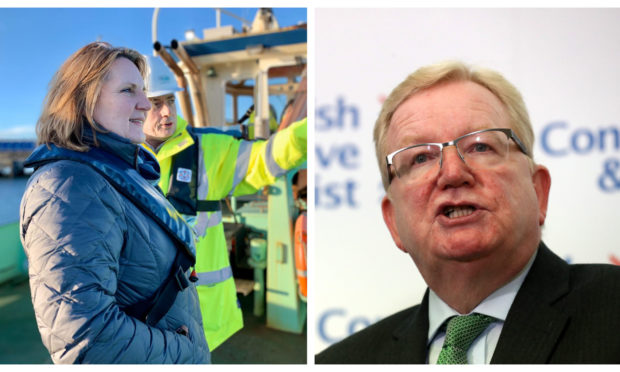Just when the SNP is looking at its most vulnerable, the biggest opposition party in Scotland has embarked on an internal spat that threatens to divert attention away from the squabbling Nationalists.
The battle for the next leader of the Scottish Tories is under way, with ballot papers sent out to the party membership over the weekend.
What many Conservatives north of the border hoped would be a coronation for interim leader Jackson Carlaw has descended into a rather vicious two-way duel, following the entry of rival candidate Michelle Ballantyne into the race.
Since the South Scotland MSP announced her decision to run last month, relations between her and Carlaw, the favourite, have been downhill all the way.
The bickering seemed to have reached a crescendo late last week, when Carlaw, in a newspaper interview, attacked his opponent for criticising the Tories’ general election campaign in Scotland, and undermined her credibility.
“In all the time that she’s been in the shadow cabinet, Michelle is the only member of it never to have brought forward a single policy proposal or to table a single policy paper. I find that curious,” he said.
Now Ballantyne has upped the ante, with an unguarded swipe at all her colleagues in Scotland, blaming them for losing seats to the Nationalists in December.
Writing on the Conservative Home website on Monday, she said: “We need to be less timid and more confident in ourselves.”
She accused her party of failing to hold the SNP to account over its handling of the health service, crime and the economy.
And she slated her fellow Tories for offering to do a deal with the SNP to help it pass its budget, saying: “This is not how an effective opposition behaves.”
It is too late for this contest, which reaches its climax on February 14, to recover its dignity, but Scottish Conservatives who take Ballantyne’s rhetoric seriously should remember what is at stake.
The new leader will have to undo the damage that has been done since the departure of the charismatic Ruth Davidson last August, and the arrival in Downing Street of Boris Johnson, with his hard Brexit agenda.
Davidson’s success in detoxifying the Tories in Scotland reached its apogee in the 2017 general election, which saw her taking seats off the SNP and cementing her credentials as a plausible future challenger to Nicola Sturgeon as first minister.
The SNP lost a third of its seats in that Scottish Tory surge, which followed their best ever election result in the 2016 Holyrood election, winning 22% of the vote.
Davidson appealed to moderates and she alone might have been able to steady the ship in December in the face of the divisive Johnson.
We won’t ever know, but Carlaw didn’t have a disastrous election, and is now the best hope his party has of rebuilding support.
He has performed well against Sturgeon in Holyrood and has the backing of nearly all his MSPs and MPs.
More importantly, he has a far better chance than Ballantyne of reaching those Unionists in other parties who may well decide the Nationalists’ fate at the next Scottish elections in 2021.
Ballantyne is an uncompromising right-winger, almost the stereotypical Tory that Davidson strove to make extinct.
As the shadow social security spokeswoman, she has worrying past form – for example, in pronouncements about the number of children poor people should be allowed to have.
And she is unapologetically gunning for the Brexiteer vote in Scotland, which alienates her from any wavering Lib Dem voters and Labour Remainers, the kind of constituencies a future Scottish Tory leader must woo.
But worst of all, she has allowed her personal ambition to stand in the way of what is good for her party.
A unified opposition would have presented a refreshing contrast to warring Nationalist camps.
Given the sorry state of the Labour Party, it is up to the Conservatives in Scotland to spearhead the Unionist counter attack.
A second independence referendum may be off the agenda for now, something Sturgeon herself clearly accepts, but a resounding SNP victory at Holyrood next year could alter the political landscape again.
By then Johnson, massive majority or not, may be even less popular in Scotland than he is now, and the effects of Brexit will be more tangible.
The Conservatives here need to galvanise the Unionist majority and take the fight to the Nationalists.
